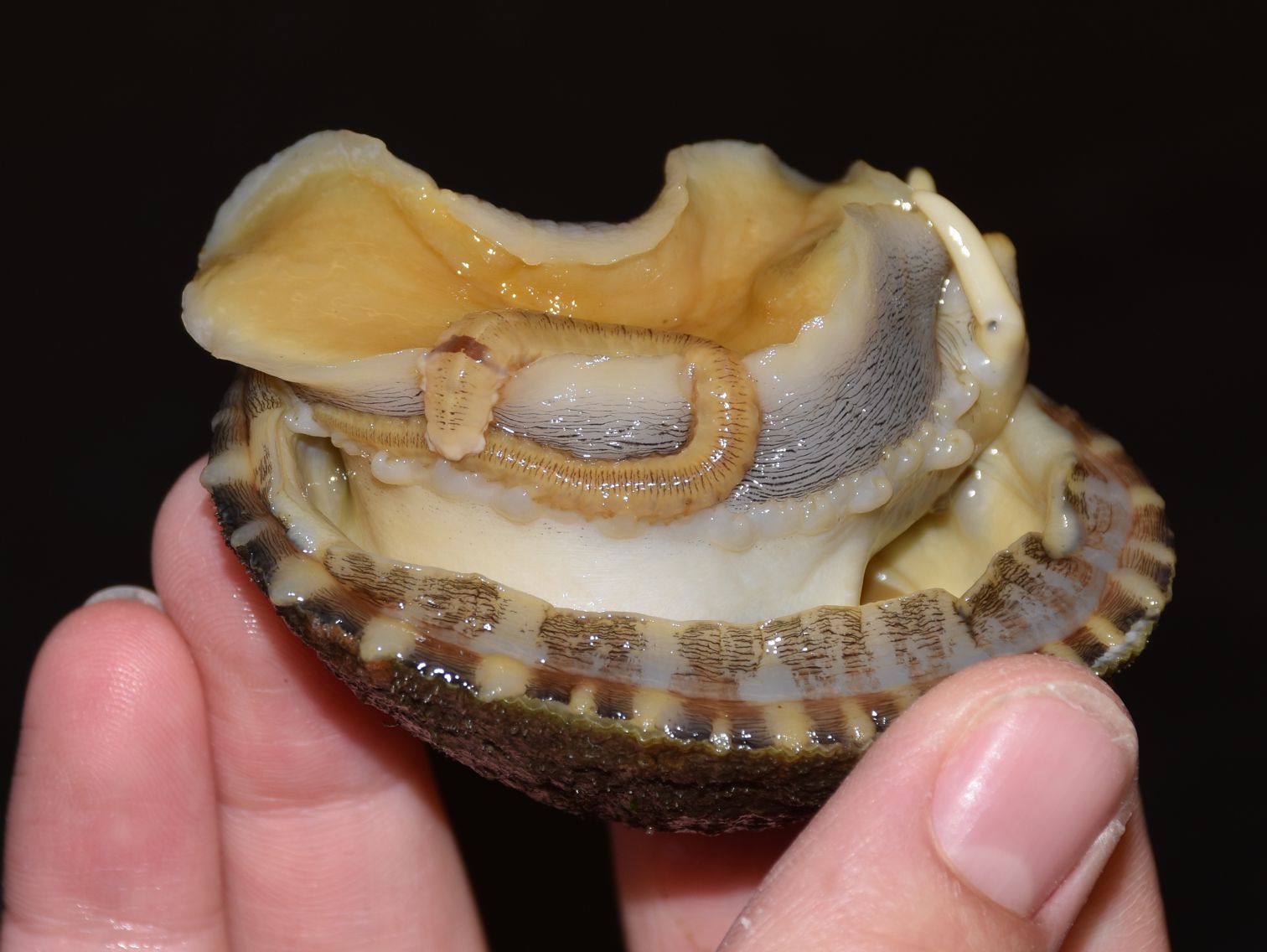Arctonoe vittata (Grube, 1855)Common name(s): Scale worm. Symbiotic scale worm, Red-banded commensal scale worm, Banded scale worm |
|
| Synonyms: Halosydna lordi, Polynoe vittata | 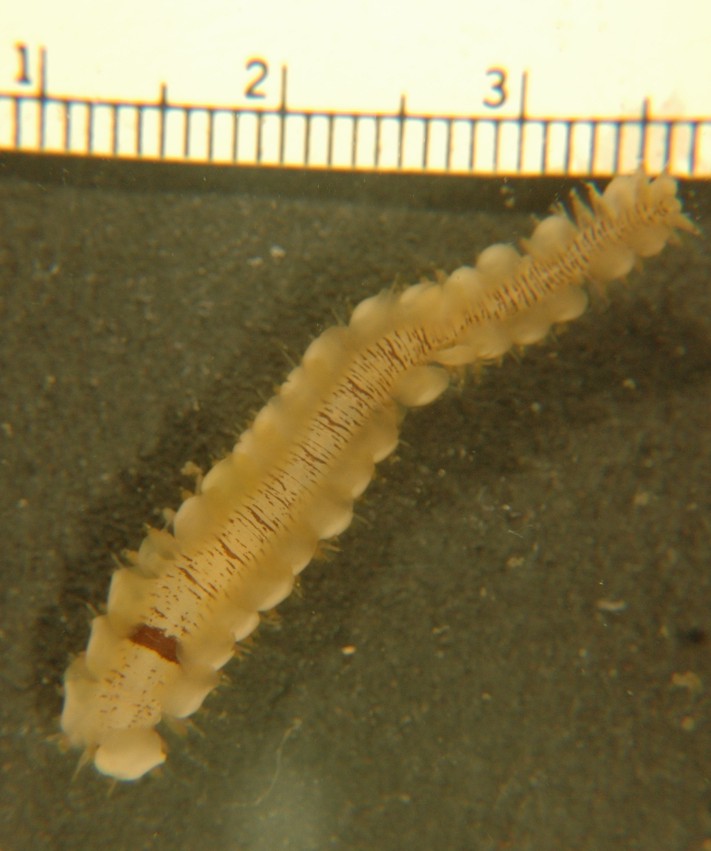 |
| Phylum Annelida
Class Polychaeta Order Phyllodocida Superfamily Aphroditidae Family Polynoidae |
|
| Arctonoe vittata symbiont with Diodora aspera, from Sares Head, WA. Scale is cm divided into mm. | |
| (Photo by: Dave Cowles, July 2006) | |
How to Distinguish from Similar Species: This is the only Arctonoe commensal scaleworm that has the broad dark band across the back. A. pulchra is usually orange and may have fewer elytra, which nearly meet dorsally. A. fragilis has frilly edges to the elytra.
Geographical Range: Bering Strait south to Ecuador; Japan
Depth Range: Middle intertidal to 275 m
Habitat: Symbiotic with many invertebrates, including sea stars, terebellid polychaetes, gastropods such as Diodora aspera, and Cryptochiton stelleri.
Biology/Natural History: Usually lives symbiotically with Cryptochiton stelleri, Diodora aspera, or the seastar Dermasterias imbricata. Also may be found on Henricia leviuscula, Luidia foliata, Pteraster tesselatus, Solaster stimpsoni, Solaster dawsoni, Haliotis kamtschkana, and the terebellid worms Thelepus crispus and Neoamphitrite robusta. Polynoids such as Arctonoe are carnivores, but do not feed on the animals with which they are symbiotic. Frequently they nip of the heads of small tube-dwelling polychaetes as their host moves around. Individuals taken from their hosts will generally prefer their same host species over other species they are symbiotic with. They seem to locate their host by using chemoreceptors on their three prostomial antennae, with further recognition by contact with the peristomial palps. Small juvenile worms are found mainly in the summer. Generally only one worm inhabits a given host, suggesting that this species may fight over hosts as does A. pulchra. When Pisaster ochraceous attacks Diodora aspera in which this species is living, the worm moves around the pallial groove of the limpet to the side the seastar is attacking from, reaches out, and bites the tube feet or ambulacral area of the seastar. This frequently results in the seastar withdrawing from its attack.
Members of Family Polynoidae, unlike most other errant polychaetes, have parapodia specialized for walking rather than as paddles. Their longitudinal muscles, which caused lateral undulations in other polychaetes, are poorly developed and they don't undulate much. As a result, although they can walk efficiently they are poor swimmers.
| Return to: | |||
| Main Page | Alphabetic Index | Systematic Index | Glossary |
References:
Dichotomous Keys:Flora and Fairbanks, 1966
Kozloff 1987, 1996
Smith and Carlton, 1975
General References:
Brusca
and Brusca, 1978
Carefoot,
1977
Kozloff,
1993
Morris
et al., 1980
Niesen,
1997
O'Clair
and O'Clair, 1998
Scientific Articles:
Web sites:
General Notes and Observations: Locations, abundances, unusual behaviors:
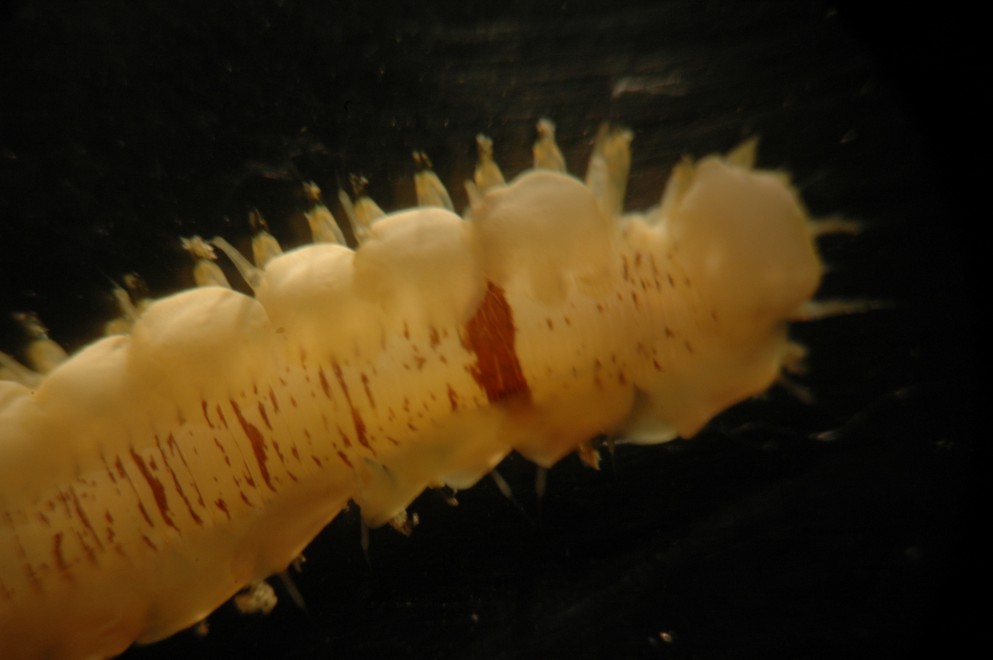
In this closeup of the head end, the elytra which are widely spaced
dorsally are visible. An elytrum is covering the head.
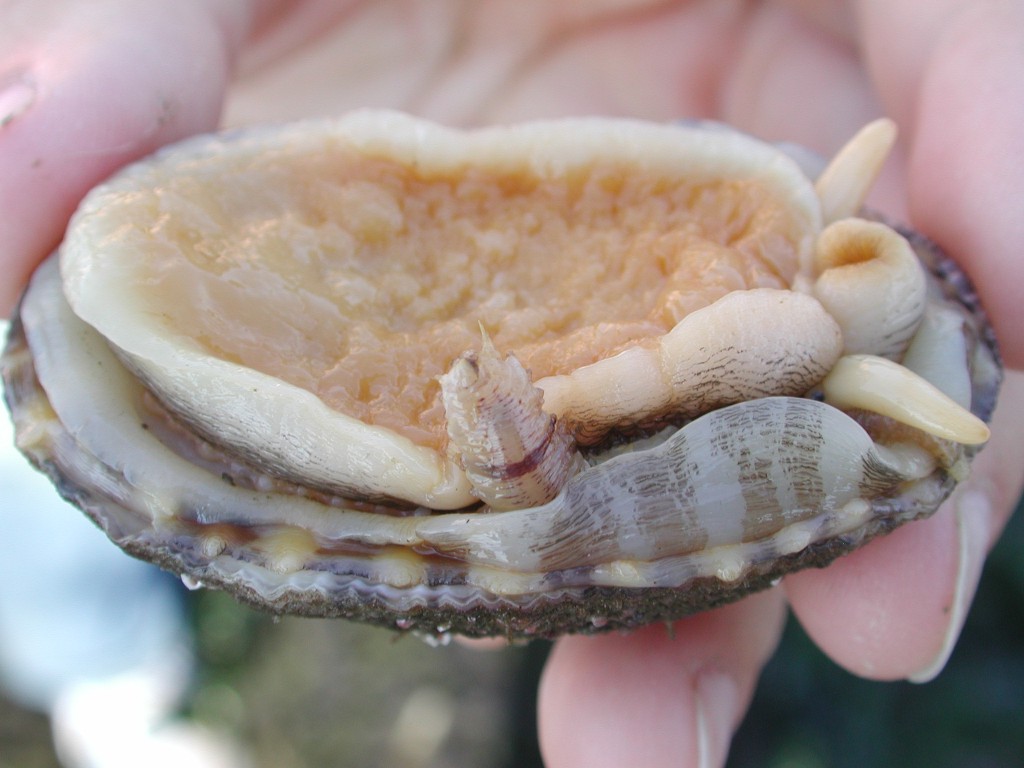
Here is Arctonoe vittata as it is usually seen in
its host,
Diodora
aspera. Photo by Dave Cowles, July 2007
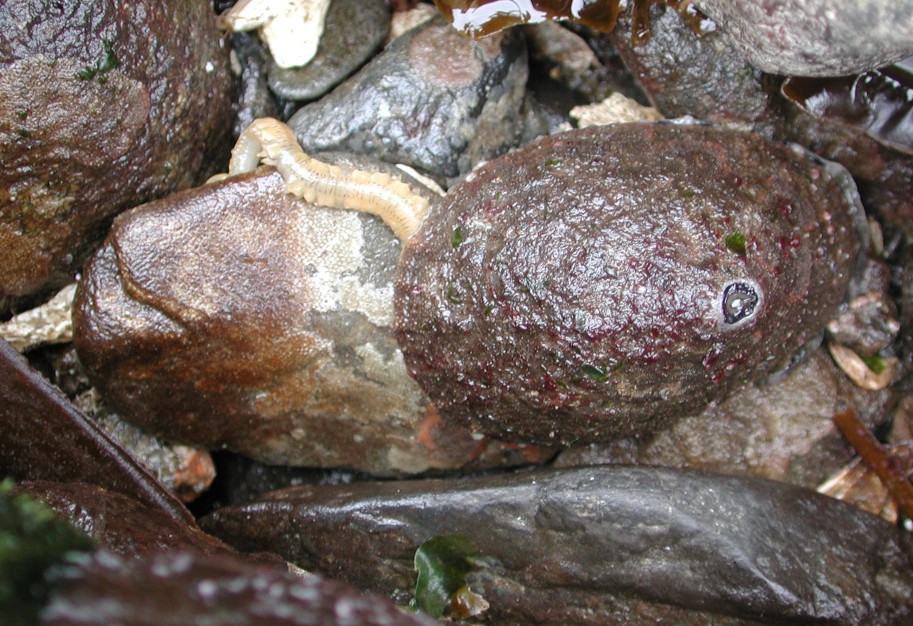
Here an individual reaches out from under Diodora aspera and explores the nearby environment. Photo at Swirl Rocks by Dave Cowles, June 2011
Another Diodora aspera with Arctonoe vittata as a symbiont. Photo by Dave Cowles, July 2015
Authors and Editors of Page:
Dave Cowles (2006): Created original page
